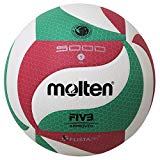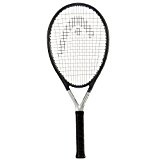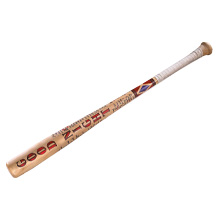Table tennis bat purchasing advice: how to choose the right product
- What You Need to Know
- Table tennis players should match their paddle to their own playstyle.
- Simple, off-the-shelf paddles suffice for beginners, but experienced players should consider customising their own paddle.
- The blade and rubber of a paddle have a large effect on gameplay.
- Paddles come with different handles, some of which promote faster switching between fore and backhand, and others a better grip.
- Paddles last for longer when they are cleaned and stored away properly after each use.
From the Living Room to the Olympics
Table tennis is a much-loved hobby sport. In parks, school playgrounds, in the house or in the garage, table tennis tables can be found all over. Originally conceived as an indoor alternative to tennis, table tennis has long since taken on a life all of its own. Professional table tennis has even been an Olympic sport since 1988.
Together with a table, a net, and a ball, there is one more thing that you need to get a game of table tennis off the ground—paddles. The idea to soften wooden paddles with parchment or leather was first conceived at the beginning of the 20th century. These days, all table tennis paddles are equipped with a rubber surface. The characteristics of this surface are regulated by the ITTF (International Table Tennis Federation).
The Anatomy of a Table Tennis Paddle
A table tennis paddle is made from three main components: the handle, the blade, and the rubber. The blade is the main component of a paddle and is made from sheets of different woods, layered over one another. The blade is then covered by a rubber surface which comes into contact with the ball. The surface itself is made from two layers—one made from sponge and one from rubber. The thin edge of the paddle is covered by a ribbon.
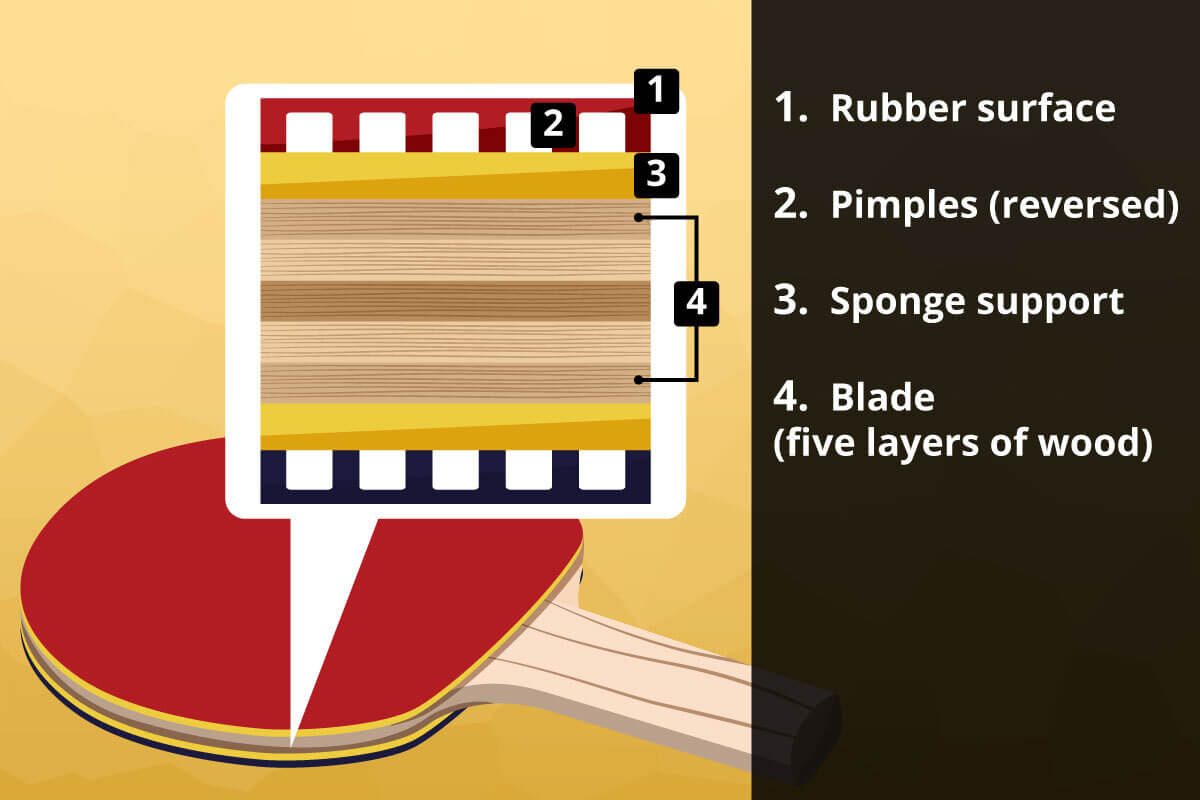
The Rubber: A Science in Itself
The rubber of an ITTF certified table tennis paddle should fulfil certain requirements. It should cover the entirety of the blade without sticking out anywhere. The two sides should be different colours (specifically red and black), so that the opponent can recognise a change of stroke during a rally. The rubber should be mat in quality as to not dazzle the opponent. The rubber should not exceed 2mm in thickness. Usually, manufacturers add the combined thickness of the two rubber surfaces to the product description. The combined thickness should therefore not exceed 4mm. Out of all the constituent parts, the rubber has the most significant effect on the gameplay itself. The thickness of the sponge, the hardness of the rubber, and the grip of the outer surface are further important characteristics.
Sponge Thickness
The thickness of the sponge has a large effect on the feel of the game. The thicker the sponge, the faster the ball rebounds off its surface. Aggressive players who like to smash the ball with force should use a paddle with a lot of padding. The ball sinks deeper into a thick padding, causing it to rebound with greater force. A thicker sponge also creates more spin, essentially speeding up the rotations on the ball.
Defensive players should instead opt for a thinner sponge. This helps slow down and control the ball. Allrounders who wish to swap seamlessly between attack and defence should choose a medium-thickness sponge.
In the following table, we highlight which sponge thickness is best suited to which type of player:
| Sponge Thickness in mm | Type of Player |
| 1.0mm—1.5mm | Defensive |
| 1.5mm—1.8mm | Allrounder |
| 1.8mm—2.5mm | Offensive |
Hardness of the Surface
The hardness of the surface primarily influences the tempo and control of the game. Beginners are recommended to use a softer surface, as this gives you more control and allows you to create spin without having perfect technique. The elasticity of a soft surface helps to create ball speed, even if the shot itself isn’t hit with force. In the table tennis community, this characteristic is called ‘catapult’. A hard surface, on the other hand, encourages a fast-paced game, and is therefore best suited to experienced players. With the right technique, this allows you to create the ideal levels of tempo, precision, and spin. It is worth noting that a higher tempo generally means less control.
The Rubber: With Pimples, or Without?
The rubber surface of a paddle is equipped with tiny pimples which either face inwards or outwards. Inwards faced pimples create a flat surface on the outside. Outwards faced pimples create a textured surface for the ball to bounce against.
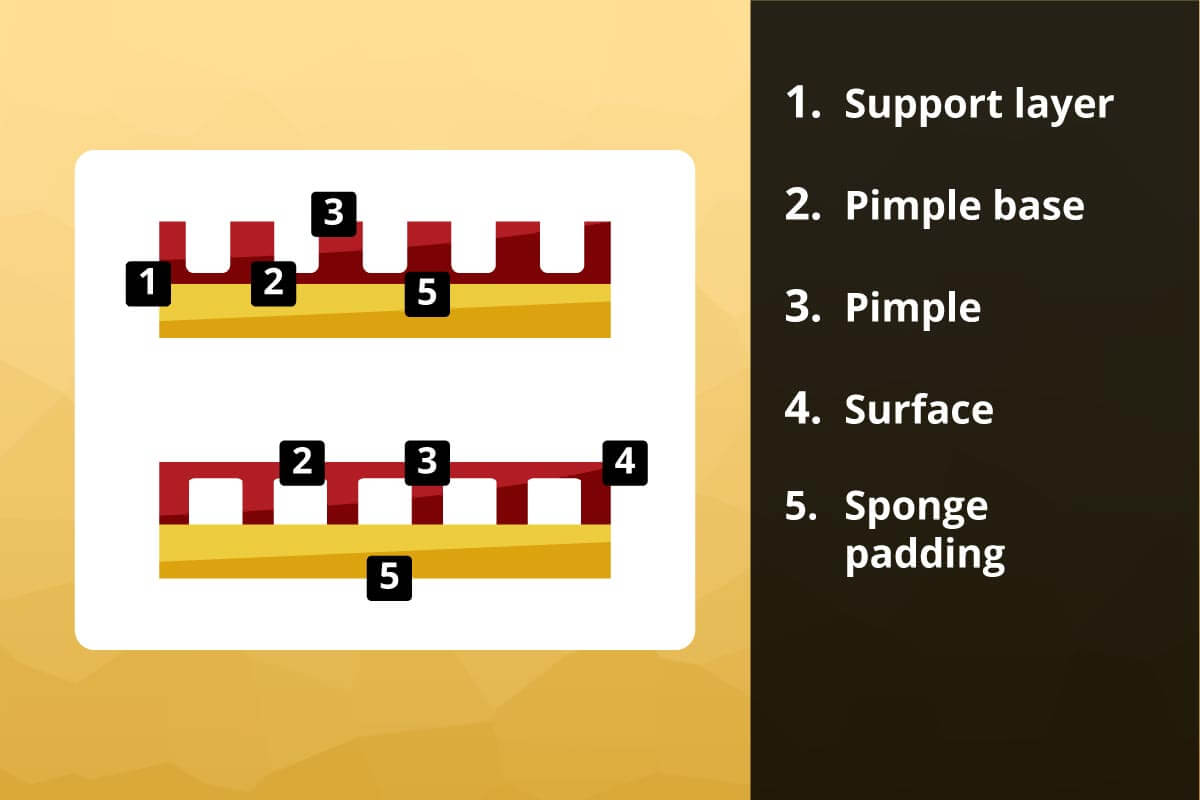
Most table tennis players these days prefer inwards facing pimples. It’s easier to create spin and speed when the outer surface is flat. Beginners and attacking players usually prefer this kind of paddle.
Experienced defensive players often opt instead for rubbers with outwards facing pimples. This kind of paddle provides more grip and therefore more control. In addition, they produce less spin—effectively cancelling out the spin of the opponent. The longer the pimples, the slower the ball tempo and lesser the speed. Short pimples are best suited to counter attacks and blocks, while longer pimples are good for a defensive game played at greater distance from the table.
Hard Blades Create a Fast Tempo Game
According to ITTF standards, table tennis paddles need to be made from at least 85% wood. They must be uniformly thick and unyielding. The different layers of wood can, however, have different levels of firmness. Together with wood, plastic, and carbon are also commonly used. Harder woods are more suited to an offensive game, while defensive players may prefer to opt for something softer.
The firmness of the wood used in the manufacture of a table tennis paddle is illustrated by the terms, ‘OFF’ (Offensive), ‘ALL’ (Allrounder), and ‘DEF’ (Defensive), which refer to the type of player they best serve.
| Wood | Playing Style and Speed |
| OFF+ | Fast, attacking player |
| OFF | Medium-paced, attacking player |
| OFF- | Slow, attacking player |
| ALL+ | Fast, all-around player |
| ALL | Medium-paced, all-around player |
| ALL- | Slow, all-around player |
| DEF+ | Fast, defensive player |
| DEF | Medium-paced, defensive player |
| DEF- | Slow, defensive player |
The Four Types of Handles: Comfort or Reaction Speed?
As the premier point of contact between player and paddle, the design of a handle has a large effect on the game. The handle can be made from plastic, carbon, or wood. Unvarnished wood has the most amount of grip. It absorbs sweat and rarely slips. Some handles even have their own form of cushioning which helps to reduce vibrations. Table tennis paddle handles come in four main types: straight, anatomic, flared, or conical. Choosing the right shape and material for your style of play can only really be done with hands-on testing.
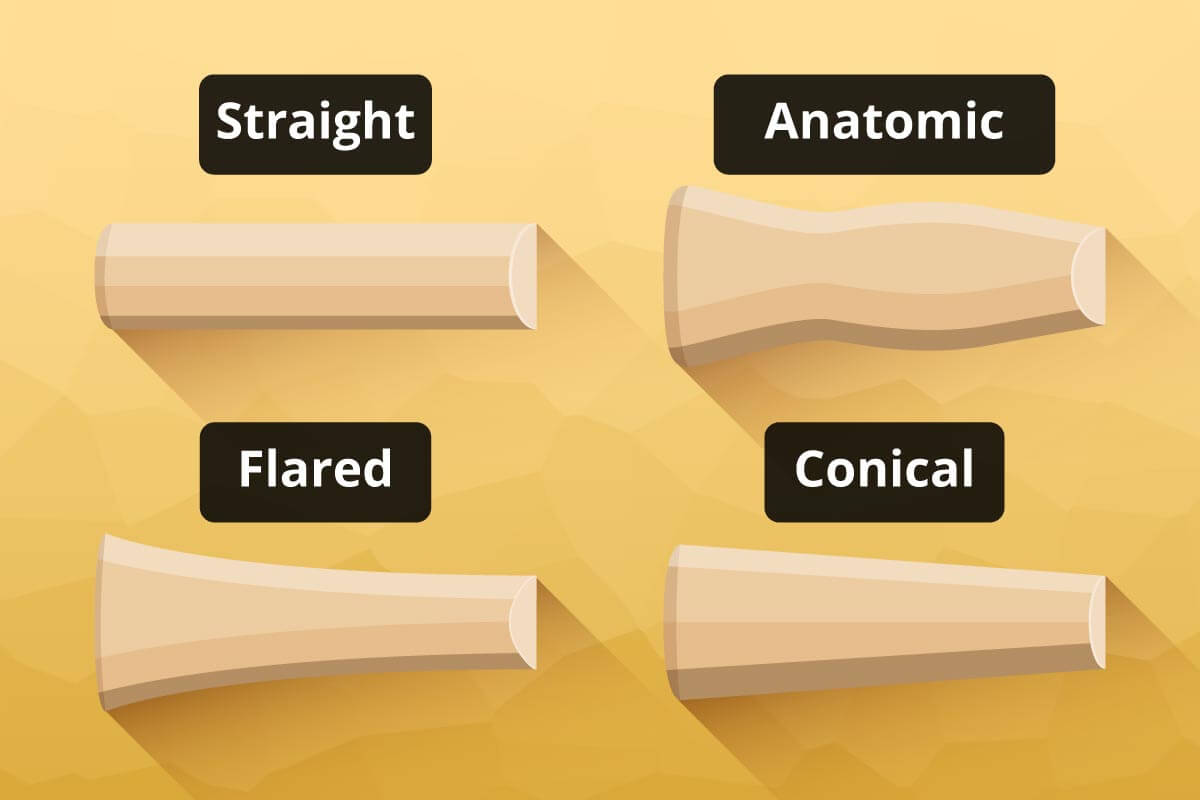
A straight handle is the same width along the entirety of its length. It can quickly be turned over in the hand and allows the player to react quickly during a rally. Professionals often prefer a straight handle for this reason.
The flared handle is slightly thicker at one end, gradually curving inwards along the shaft of the handle. It sits firmly in the palm of the hand while still allowing a relatively quick change of direction.
A conical handle becomes wider as it extends away from the blade. It has very similar characteristics to the flared handle, although it is not quite as popular.
The anatomical handle is ergonomically shaped and provides a natural feeling of grip. With regards to comfort, this type of handle is unbeatable. On the other hand, it is not easy to rotate quickly during a rally. For this reason, it is rarely used by professionals.
Penholder or Shakehand?
In contrast to the conventional shakehand paddle grip, the penholder grip is particularly popular in Asia. Players who use the penholder grip hold the paddle like a pen, the end of which being the blade. Both types of grips are common and can be seen at high-level tournaments, such as the Olympics.
The Right Kind of Paddle for Every Type of Player
The characteristics of a paddle should be based on the individual player’s playstyle and proficiency level. While beginners are well served by a balanced, off-the-shelf paddle, professionals with a fully developed style need a paddle with very specific characteristics. To help with this, manufacturers have developed a rating system, also known as ‘performance rating’. Each paddle is given a rating based on speed, spin, and control. Given that every manufacturer has their own scale of rating system, it is very difficult to compare paddles from different manufacturers. Speed and control are oppositional forces—the higher the speed, the lower the ball control. Even with off-the-shelf paddles, you can use this rating system to find your ideal kind of paddle.
All-Rounders
All-rounders are best suited to a balanced style of play. They are usually recommended to beginners and hobby players as they allow you to have a good balance of attacking and defensive qualities. Experienced players, on the other hand, need a paddle that suits their personal strengths. All-rounder paddles are usually not recommended for professionals. They often come as a set and are available at the lower end of the market. This kind of paddle is usually equally effective in all three categories: speed, spin, and control.
Advantages
- For beginners and hobbyists
- Effective for attack and defence
- Can be purchased as a set
- Often cheap to purchase
Disadvantages
- Too limited for most professionals
Paddles for Defensive Players
Paddles for defensive players tend to have a soft rubber, soft wood, and a thin sponge. This makes everything slower. With these paddles, the ball isn’t catapulted at great speeds. Meanwhile, the extra grip allows for a longer contact time between ball and rubber, increasing the ball control. The surface area of the blade can also be a little larger than with offensive paddles. Due to their specific nature, using this kind of paddle requires a certain amount of technique. Although they score low on speed and spin, their control score tends to be very high.
Advantages
- Perfect for defensive players
- Good ball control
Disadvantages
- Not suitable for beginners or attack-minded players
Paddles for Attack-Minded Players
Attacking paddles come with hard wood, a hard rubber, and a thick sponge. This contributes to a fast-paced, aggressive gameplay with lots of spin. The downside to this is that they offer less control, making them less suitable for beginners. Experienced players who are able to strike the ball with force are well-served by this kind of paddle. Attacking paddles receive a good rating for speed and spin, but a poor rating for control.
Advantages
- Perfect for fast, aggressive players
- Lots of spin
Disadvantages
- Less ball control
- Not suitable for beginners or defensive players
Paddles for Professionals
Professionals and enthusiastic amateurs should sooner or later customise their own paddle. This requires some knowledge and research. Every element of the paddle can be configured, from the wood down to the rubber, allowing the player to match a paddle to their exact requirements. It’s even possible to make a forehand side which is suitable for an offensive game and a backhand side which is better for blocking. This type of paddle comes at a higher cost than off-the-shelf models. For a professional-level paddle, you can expect to pay over £50. Thanks to their higher manufacturing quality, professional-level paddles can be expected to last longer than cheap alternatives.
Advantages
- Characteristics can be matched to the player
- High in quality and long lasting
Disadvantages
- Requires knowledge and research before purchase
- Expensive
What Else Do I Need to Know?
Characteristics like size and weight are often not talked about when it comes to table tennis paddles. This is because most models don’t differ too greatly from one another. That said, these measurements have a noticeable effect on the game. The manufacturing quality is similarly important, not only for the feel during the game, but also for the lifespan on the paddle.
Weight and Size
The ITTF does not set any official requirements for the weight and size of a table tennis paddle. Manufacturers are therefore not limited in what they can make. Certain measurements have, however, established themselves as industry standards. Paddles for adults weigh between 160g and 200g, while models for children range between 130g and 160g. A heavier paddle is more tiring to hold over long periods of time, although it provides more momentum, which can be particularly effective for smash shots.
Depending on the handle, the length of a paddle ranges between 25cm and 29cm. Most models are around 17cm wide. These measurements can vary slightly. Defensive players sometimes prefer to have slightly larger paddles. Models for children are a little smaller—usually with a length of 20cm and a width of 15cm.
Manufacturing Quality
Good quality manufacturing is important for the performance and lifespan of a table tennis paddle. This quality is visible in several areas. Should the ribbon begin to come away from the wood of the paddle, this is an exemplary sign of poor-quality manufacturing. The same applies to the rubber. It should, under no circumstances, come apart from the wood. Sharp corners also point towards poor quality. A poor-quality rubber is usually instantly recognisable by the fact that fingerprint marks are left behind if it’s pressed. A high-quality rubber, meanwhile, will spring back instantly.
Helpful Accessories
To maintain your paddle in a good condition, you’re going to need a few important bits of equipment. These often come included upon purchase of a new paddle. Keeping your paddle in a good condition is best done with a surface cleaner and cleaning cloth. After every long use, your paddle should be sprayed with a little cleaning product and wiped off carefully with a cloth.
Once cleaned, the surface of the paddle should be protected by a protective foil cover. This helps to prevent dust and dirt from penetrating the surface and causing damage.
Paddle bags or cases offer a gentle and safe way to transport and store your paddle.
Last but not least, we recommend being well stocked with table tennis balls. Having paddles but no balls is extremely frustrating. Balls don’t cost too much and can be easily and comfortably transported in the paddle bag. Since 2018, table tennis balls have been manufactured solely from plastic. Before this date, most were made from celluloid. Celluloid is highly flammable and no longer considered suitable for transportation. Most balls are white or orange, have a diameter of 40mm, and weigh 2.7g.


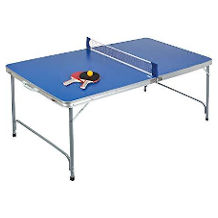
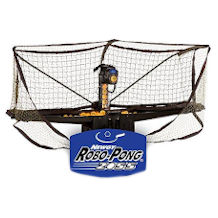
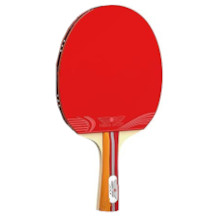

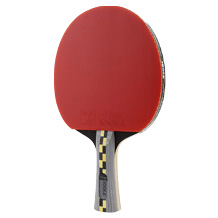
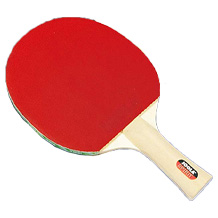
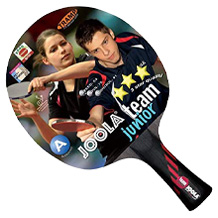
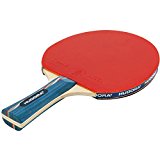

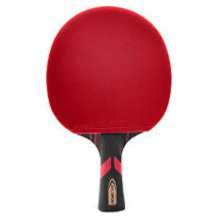
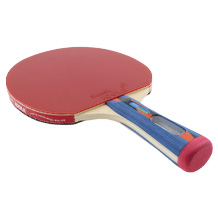
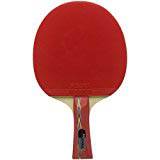
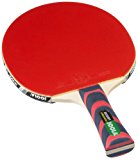
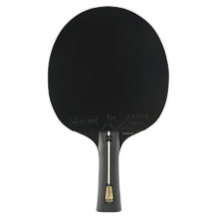
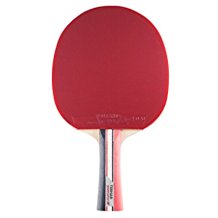
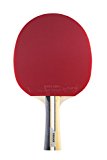
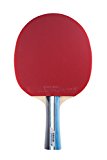
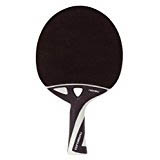
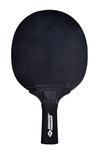
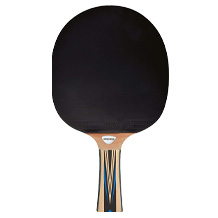
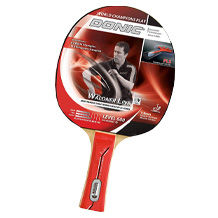
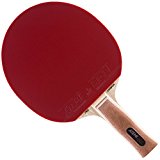
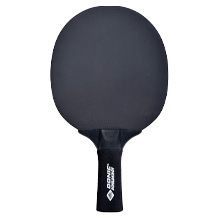
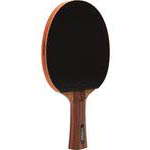
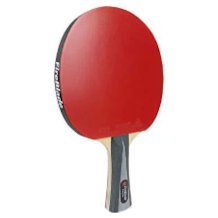
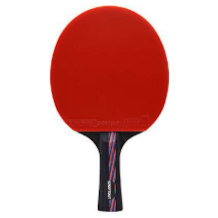

 6,683 reviews
6,683 reviews
